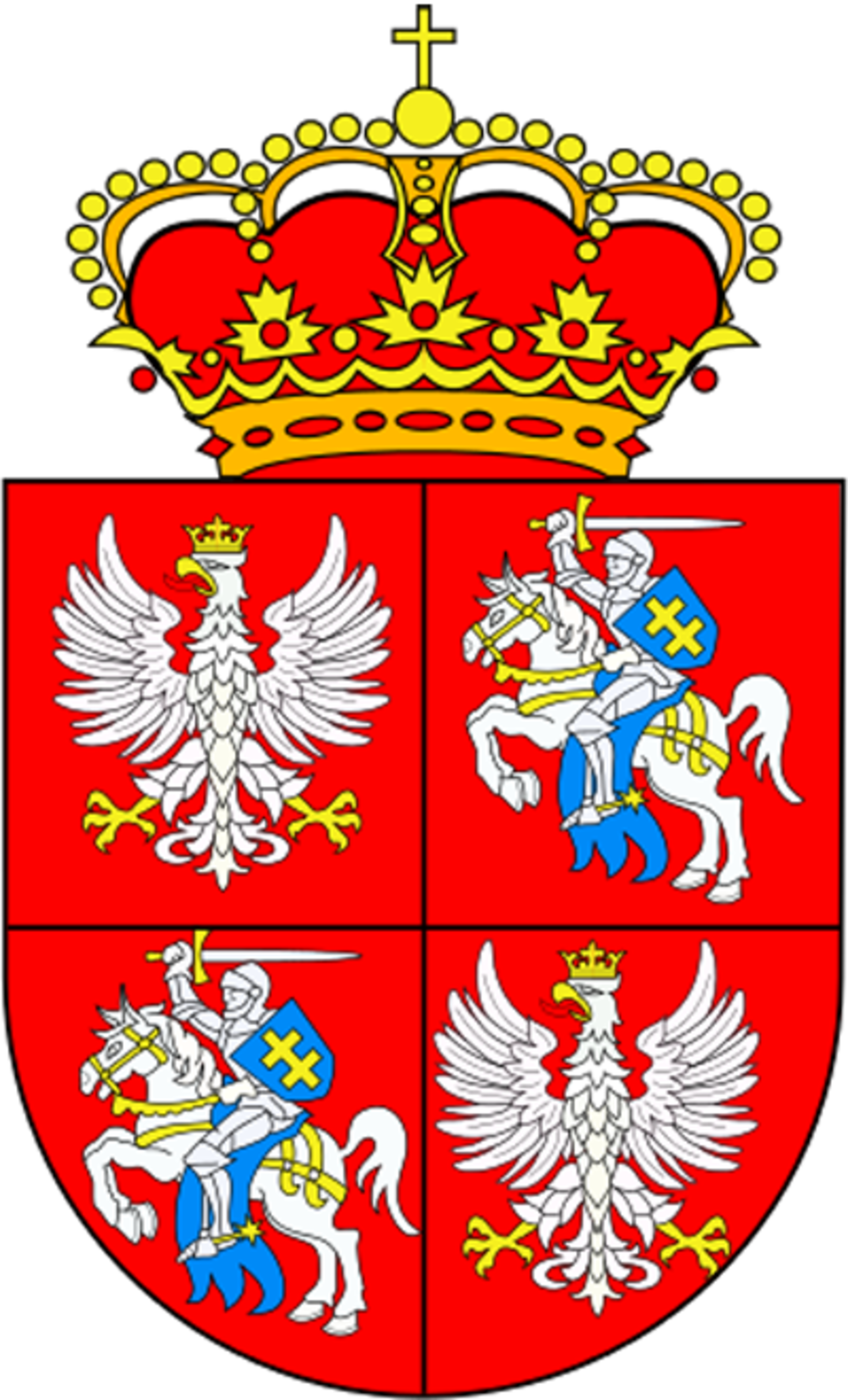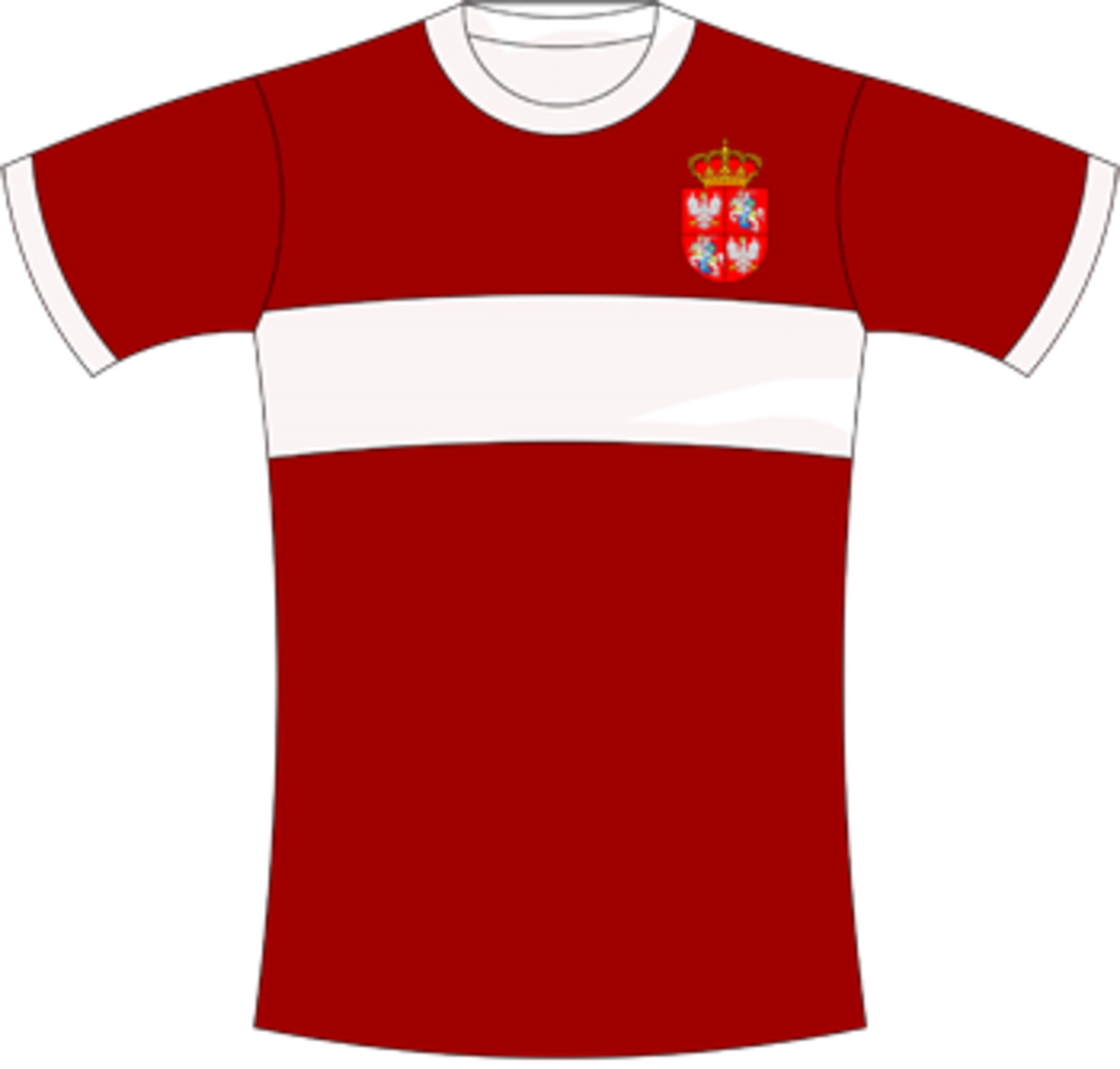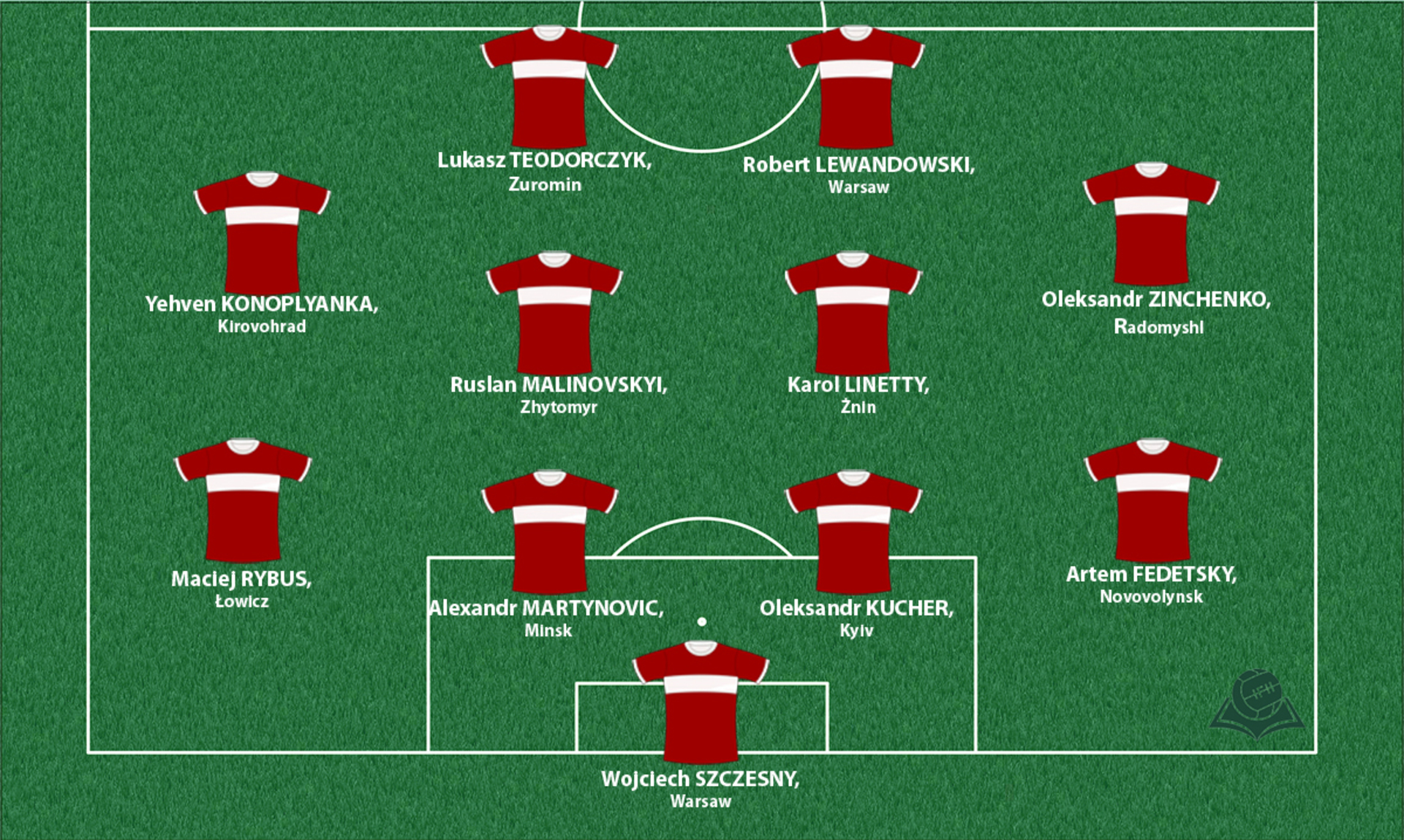Polish-Lithuanian Commonwealth
The Polish-Lithuanian state was located between the Baltics, the Black Sea, and Dnieper in the east. Up until 1569 it was a personal union, after which the states united, allowing Lithuanian nobility to obtain the same rights that were previously reserved only for Polish nobility.

Coat of arms

Shirt
| Position | First name | Last name | Mjesto rođenja | Like | Dislike | |
|---|---|---|---|---|---|---|
| GK | Denys | BOYKO | Kiev |
6 |
1 |
|
| GK | Wojciech | SZCZESNY | Warsaw |
19 |
1 |
|
| DC | Alexandr | MARTYNOVIC | Minsk |
6 |
2 |
|
| DC | Bartosz | SALAMON | Poznan |
0 |
2 |
|
| DC | Igor | PLASTUN | Kiev |
3 |
1 |
|
| DC | Michal | PAZDAN | Kraków |
3 |
0 |
|
| DC | Oleksandr | KUCHER | Kiev |
7 |
1 |
|
| DRLC | Artur | JEDRZEJCZYK | Dębica |
0 |
1 |
|
| DRLC | Denis | POLYAKOV | Minsk |
0 |
0 |
|
| DRLC | Dennis | POLYAKOV | Minsk |
0 |
0 |
|
| DRL | Tomasz | KEDZIORA | Sulechów |
1 |
1 |
|
| DR | Artem | FEDETSKY | Novovolynsk |
3 |
2 |
|
| DL/AML | Maxim | VOLODJKO | Minsk |
2 |
1 |
|
| DC/DMC | Krystian | BIELIK | Konin |
3 |
1 |
|
| DMC | Nikita | KORZUN | Minsk |
0 |
0 |
|
| MC | Karol | LINETTY | Żnin |
4 |
0 |
|
| MC | Krzysztof | MACZYNSKI | Kraków |
1 |
2 |
|
| MC | Ruslan | MALINOVSKY | Zhytomyr |
4 |
1 |
|
| MC | Stanislav | DRAGUN | Minsk |
1 |
0 |
|
| MC | Valeri | FEDORCHUK | Netishyn |
0 |
0 |
|
| AMRLC | Bartosz | KAPUSTKA | Tarnów |
4 |
2 |
|
| AMRL | Yehven | KONOPLYANKA | Kirovohrad |
5 |
0 |
|
| AML/DL | Maciej | RYBUS | Łowicz |
4 |
1 |
|
| FRLC | Mikhail | GORDEJCHUK | Saran |
0 |
0 |
|
| FRLC | Roman | ZOZULYA | Kiev |
7 |
1 |
|
| FC | Artjoms | RUDNEVS | Daugavpils |
2 |
0 |
|
| FC | Lukas | SPALVIS | Vilnius |
4 |
1 |
|
| FC | Lukasz | TEODORCZYK | Żuromin |
3 |
2 |
|
| FC | Mariusz | STEPINSKI | Sieradz |
1 |
0 |
|
| FC | Robert | LEWANDOWSKI | Warsaw |
21 |
1 |
|
| AMRL/DL | Oleksandr | ZINCHENKO | Radomyshl |
19 |
1 |
(Today part of: central and eastern Poland, central and western Ukraine, Belarus, Lithuania, part of Latvia)
Polish language became the dominant language, and Polish culture the culture of the ruling class. During the time between the 16th and 18th century the cities and clergy were deeply polarized, which did not cause any resistance among Lithuanian elites. The szlachta (all levels of nobility combined) constituted approximately 10% of the overall population, which was unlike other European states, whose nobility constituted only about 1,5 – 2% of the whole population, which was the reason why the Polish-Lithuanian state had taken a form of a true noble state, i.e. an elective monarchy.Consequently, the throne could only be inherited after the whole nobility had approved the successor. The nobility wanted an ambitionless ruler who would not make risky moves in foreign policy that would strengthen his power. Thus, as Europe was shaken by religious wars in the 16th and 17th century, the Polish-Lithuanian rulers had to accept religious tolerance because of the diversity of the population, which was an unusual policy in Christian lands at the time.
Also, a movement called Sarmatism (named after Sarmatia, an ancient name for the lands between the rivers Don, Vistula, Dnieper, and the Black and the Baltic Sea) grew among the Polish nobility, by which they pointed to their Sarmatian origins, opposing the Slavic ones, so as to ethnically break apart from the lower social classes. It also constituted a protection of Teutonism, as well as indicating their right to the territories of which Sarmatia once consisted.
Sources
- Zrinka BLAŽEVIĆ, Ilirizam prije ilirizma, Zagreb, 2008.
- Patrick GEARY, Mit o nacijama – Srednjovjekovno poreklo Europe, Novi Sad, 2007.
- Grupa autora, Povijest: Počeci novog doba (16. stoljeće), knjiga IX., Zagreb 2008.
- Grupa autora, Povijest: Doba prosvjetiteljstva (18. stoljeće), knjiga XI., Zagreb 2008.
- Miroslav HROCH, Društveni preduvjeti nacionalnih preporoda u Europi, Zagreb, 2006.
- Michal TYMOWSKI, Kratka povijest Poljske,Zagreb, 1999.
